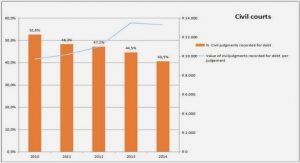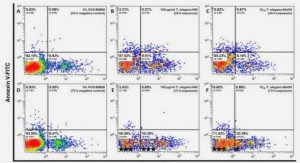Get Complete Project Material File(s) Now! »
EXPRESSION OF CCR2 IN BOTH RESIDENT AND BONE MARROW-DERIVED MICROGLIA PLAYS A CRITICAL ROLE IN NEUROPATHIC PAIN
ABSTRACT
Neuropathic pain resulting from damage to or dysfunction of peripheral nerves is not well understood and difficult to treat. Although CNS hyperexcitability is a critical component, recent findings challenge the neuron-centric view of neuropathic pain etiology and pathology. Indeed, glial cells were shown to play an active role in the initiation and maintenance of pain hypersensitivity. However, the origins of these cells and the triggers that induce their activation have yet to be elucidated. Here we show that, after peripheral nerve injury induced by a partial ligation on the sciatic nerve, in addition to activation of microglia resident to the CNS, hematogenous macrophage/monocyte infiltrate the spinal cord, proliferate, and differentiate into microglia. Signaling from chemokine monocyte chemoattractant protein-1 (MCP-1, CCL2) to its receptor CCR2 is critical in the spinal microglial activation. Indeed, intrathecal injection of MCP-1 caused activation of microglia in wild-type but not in CCR2-deficient mice. Furthermore, treatment with an MCP 1 neutralizing antibody prevented bone marrow-derived microglia (BMDM) infiltration into the spinal cord after nerve injury. In addition, using selective knock-out of CCR2 in resident microglia or BMDM, we found that, although total CCR2 knock-out mice did not develop microglial activation or mechanical allodynia, CCR2 expression in either resident microglia or BMDM is sufficient for the development of mechanical allodynia. Thus, to effectively relieve neuropathic pain, both CNS resident microglia and blood-borne macrophages need to be targeted. These findings also open the door for a novel therapeutic strategy: to take advantage of the natural ability of bone marrow-derived cells to infiltrate selectively affected CNS regions by using these cells as vehicle for targeted drug delivery to inhibit hypersensitivity and chronic pain.
CONCLUSION
Our results revealed that, after peripheral nerve injury, the activated spinal microglia is not only from the cells existed in the CNS, but also that ofthe population of cells from the bone marrow like macrophages in periphery. Those two populations of microglia (i.e., resident microglia and peripheral macrophages) participate in the reaction of spinal microglia after partial ligation of the sciatic nerve. Bone marrow derived macrophages have the ability to infiltrate into the spinal cord parenchyma, proliferate and differentiate into fully functional microglia, like resident microglia. The expression of CCR2 in resident microglia and peripheral macrophages is necessary for the development ofthe neuropathic. The MCP 1/CCR2 system plays a critic role acting as a trigger for microglial activation and MCP-1 not only activates resident microglia, but also triggers the infiltration of circulating monocytes. To efficiently treat the illness like neuropathic pain, the resident microglia in the CNS and the macrophages derived from the bone marrow need to be targeted.
The blood-brain barrier (BBB) and the blood-spinal cord barrier (BSCB) strongly contribute to the immune privileged status of the CNS. In normal physiological conditions, only small, lipid-soluble molecules can freely diffuse through the capillary endothelial membrane connected between themselves by the tight junctions.
CHAPITRE I GENERAL INTRODUCTION
1.1 Neuropathic pain
1.2 Microglia and macrophages
1.3 Activated Microglia and Neuropathic Pain
1.4 MCP-1/CCR2
1.5 Research Problems
1.6 Animal model and behavioral testing
1.7 Presentation 23
CHAPITRE II EXPRESSION OF CCR2 IN BOTH RESIDENT AND BONE MARROW-DERIVED MICROGLIA PLAYS A CRITICAL ROLE IN NEUROPATHIC PAIN
2.1 ABSTRACT
2.2 INTRODUCTION
2.3 MATERIALS AND METHODS
2.4 RESULTS
2.5 DISCUSSION
2.6 ACKNOWLEDGEMENTS
2.7 REFERENCES
Conclusion générale






